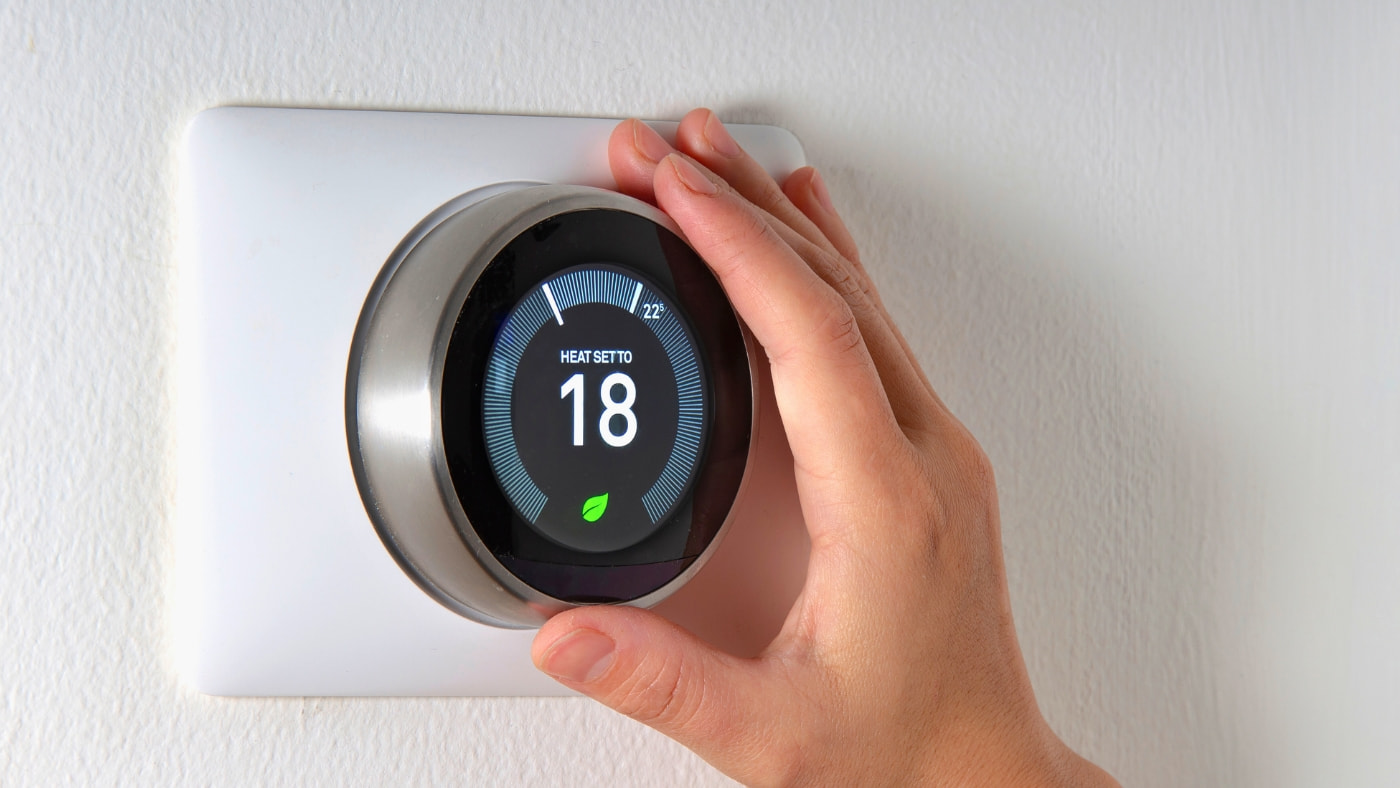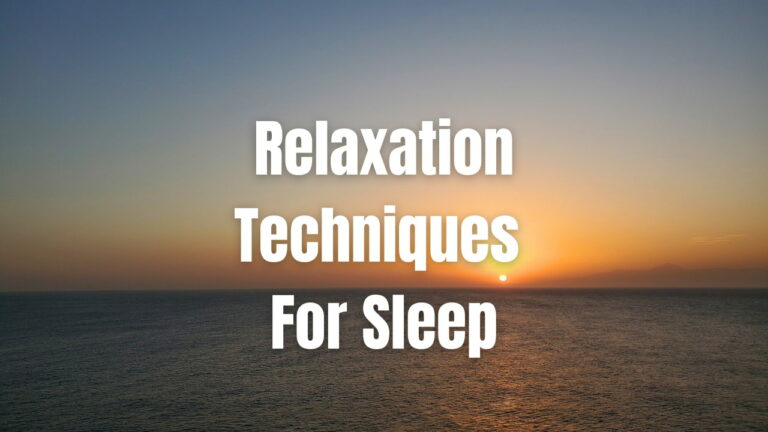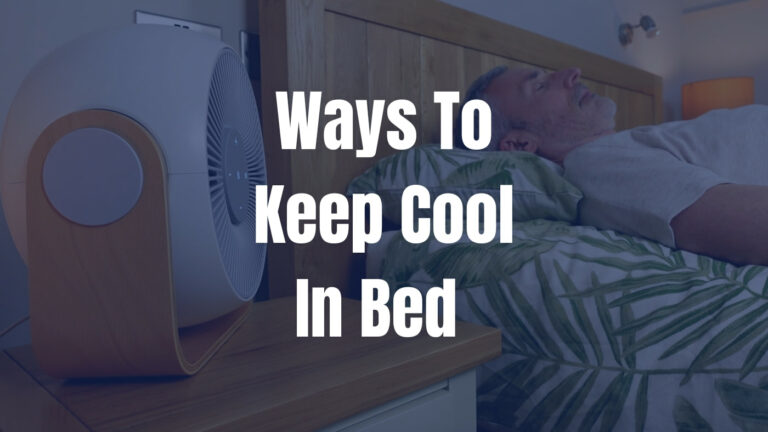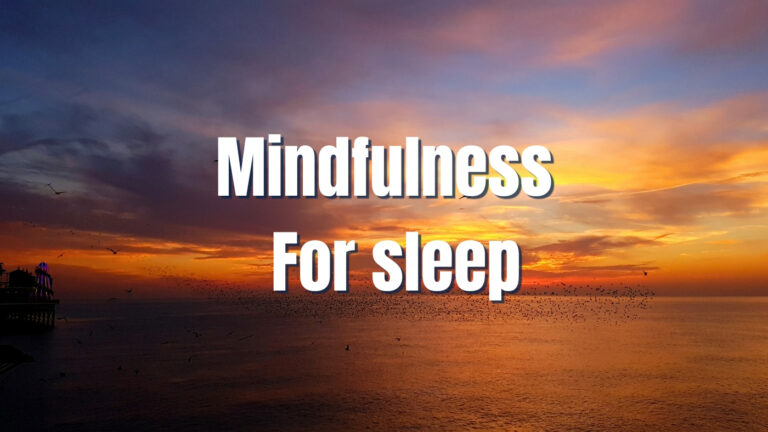
The short version
There doesn’t appear to be a global consensus on a specific ideal bedroom temperature for sleep, as it varies from person to person.
However, research studies, medical organisations, and online sources often recommend different temperature ranges to experiment with.
Here are some key points from the research and sources I discuss in this article:
- Most recommendations for the ideal bedroom temperature for adults fall between 60-67°F (15.6-19.4°C). Some studies suggest slightly higher temperatures, such as 19-21°C (66.2-69.8°F).
- Factors such as age, health conditions, and geographic location influence what temperature people find comfortable.
- Very high or very low temperatures have been found to disrupt sleep, but the exact thresholds differ among studies.
- Creating a comfortable microclimate with appropriate bedding is also important. For example, a cooler bedroom air temperature combined with cozy bedding.
- Humidity levels also play a role, with high humidity potentially worsening sleep quality.
The ideal temperature is ultimately what allows you to sleep comfortably without disruptions throughout the night.
Personally, I prefer a cooler bedroom, but I know people who prefer sleeping in warmer temperatures. So, it’s something to experiment with until you find what works best for you.
The long version
Why I care about the bedroom temperature
As someone who is sensitive to nighttime temperature and who regularly tests bed cooling and heating products, I’ve long been fascinated by the impact that temperature has on our sleep.
I personally prefer to sleep in a cooler bedroom, with appropriately cozy bedding. But as many people living in the UK will know, when we get the occasional summer heat wave, the typical lack of air conditioning in our homes can lead to some sleepless nights!
So I set out to look into what sleep experts, researchers, and other sources have to say about the impact of temperature on sleep. You’ll see that although there may not be a universal temperature ‘sweet spot’ that’s right for everyone, there’s a lot we can learn from surveys and sleep studies.
Temperature is a key factor in sleep
Sleep experts believe that temperature plays a key role in our sleep, and that excessively hot or cold temperatures have a negative impact. As a team of Japanese researchers who have extensively studied the effect of temperature on sleep wrote in their 2012 study:
The thermal environment is one of the most important factors that can affect human sleep. The stereotypical effects of heat or cold exposure are increased wakefulness and decreased rapid eye movement sleep and slow wave sleep…Excessively high or low ambient temperature may affect sleep even in healthy humans without insomnia.
Mizuno and Mizuno
There may not be one ‘ideal’ bedroom temperature for everyone
Even though I believe I sleep better in cooler bedroom temperatures, I know several people who prefer warmer bedrooms. I have one or two friends who think I’m crazy for keeping the window slightly ajar in the winter. And my 97 year old grandma would not be impressed if I suggested she keep the window open in cooler months of the year!
The difference in people’s individual preferences makes it difficult to recommend an exact bedroom temperature that will suit everyone. Some sleep websites and researchers suggest ideal bedroom temperature ranges, but even those aren’t always the same. More on that later in the article.
Although most sleep websites recommend keeping your bedroom cooler, the range of temperatures that I’ve seen goes from 60°F (15.6°C) up to 72°F (22.2°C). This makes sense in some ways, because where I live 60°F would be considered quite cool, while 72°F is a nice summer’s day. When I lived in southern Spain, however, 72°F would have been unusually cool in the summer.
Research has also shown different temperatures to be preferable in different countries and with different groups of people. As you’ll see later in the article, different studies have found temperatures in the range of 61°F (16°C) to 73.4°F (23°C) were best for sleep.
Yet in one study, the researchers state that the optimal range for sleep is around 19-21°Celcius (66.2-69.8° Fahrenheit).
So, I don’t think it’s as simple as saying “set the thermostat to this temperature if you want to sleep better.” It’s all about getting the balance right between the ambient temperature, the temperature of the microclimate you create under your bedding, and the timing of your body’s own natural cycle of cooling down and going to sleep.
Comparing my sleep tracker data in hot and cold weather
I wanted to see if my sleep tracker data would also confirm my long-standing belief that I sleep worse in hot weather.
Back in July 2021, there was a heat wave that lasted for around a week in England. Compared to some countries, it still wasn’t especially hot. But for us, the increase in temperature had everyone I know complaining about their sleep.
In the table below, you can see my sleep tracker data for the week before and during the heat wave. The maximum daytime temperatures were for London, taken from the timeanddate.com website.
| Date | Max daytime Temperature | Total sleep Time |
|---|---|---|
| 9 July | 24°C / 75.2°F | 7 hrs 12 mins |
| 10 July | 19°C / 66.2°F | 8 hrs 35 mins |
| 11 July | 22°C / 71.6°F | 7 hrs 15 mins |
| 12 July | 21°C / 69.8°F | 7 hrs 04 mins |
| 13 July | 22°C / 71.6°F | 6 hrs 45 mins |
| 14 July | 25°C / 77°F | 7 hrs 54 mins |
| 15 July | 21°C / 69.8°F | 6 hrs 24 mins |
| 16 July | 27°C / 80.6°F | 7 hrs 31 mins |
| 17 July | 28°C / 82.4°F | 7 hrs 24 mins |
| 18 July | 30°C / 86°F | 7 hrs 24 mins |
| 19 July | 30°C / 86°F | 6 hrs 14 mins |
| 20 July | 31°C / 87.8°F | 5 hrs 54 mins |
| 21 July | 30°C / 86°F | 6 hrs 29 mins |
| 22 July | 29°C /84.2°F | 5 hrs 50 mins |
The average total nightly sleep times were:
- The week before the heatwave: 7 hrs 18 mins
- The week during the heatwave: 6 hrs 41 mins
Looking at the table, you can see that my total sleep time didn’t drop until day four of the heat wave. When it did drop, it dropped significantly.
It was a long time ago now, but I distinctly remember that the house, which had no air conditioning, just seemed to turn into an oven as the week progressed. Every night when I went to bed, it felt like the bedroom was hotter than the previous night. It felt like a firey snowball effect!
An interesting point when comparing this range of sleep times and temperatures is that I know my lifestyle was very similar during the two weeks, so it’s a good like-for-like comparison.
I thought about including a winter week in the table too, but I made a couple of major changes to my lifestyle between the summer and winter, such as giving up caffeine and being stricter about my sleep schedule, both of which can have a major impact on your sleep.
I did, however, take a look and noticed that my sleep during the winter of 2021-2022 wasn’t on average much better than that week before the heatwave, despite a few really good weeks in which I got an average of 7hrs 30 mins or more.
Perhaps milder weather in the summer and cooler weather in the winter are similar for me when it comes to sleep, and it’s only excessive heat that’s disruptive. This is an idea that I’ll be exploring further in the article, as excessive heat has indeed been shown in research to negatively impact on sleep.
What surveys reveal about people’s temperature preferences
It’s one thing to talk about my own experience of sleeping in different room temperatures, but I’m just one person.
Let’s take a look at three polls and studies that have explored what thousands of people say about the way they believe the bedroom temperature affects their sleep.
1. National Sleep Foundation poll
The National Sleep Foundation (now called the Sleep Foundation) conducted a telephone poll of 1500 adults between the ages of 25 and 55 in the United States, asking them a broad range of questions about their sleep and daily activities.
In one section, the respondents were asked to rate the impact of different elements on their sleep in the previous two weeks. The were asked to give each element a score of 1 to 5, with 1 being no impact and 5 a major impact.
Bedroom temperature was the second highest element in terms of how much overall impact it had. To put it in context, here are the top six:
- Pillows 70%
- Bedroom temperature 69%
- Bedroom darkness 58%
- Sheets 54%
- Partner snoring 41%
- Allergies 37%
Even if not everyone rated bedroom temperature as having a major impact, a relatively low percentage of people rated it as having no impact at all, as you can see in the exact breakdown of the scores below:
- 5 (major impact) – 42%
- 4 – 27%
- 3 – 19%
- 2 – 6%
- 1 (no impact) – 6%
Furthermore, they found differences among the regions of the United States. Those living in the South rated bedroom temperature as more impactful than those in the Northeast:
- South – 76%
- Northeast – 67%
- West – 64%
- Midwest – 60%
In a separate question, respondents were asked how important a cool bedroom temperature is to them in getting a good night’s sleep, rather than the impact it had in the last two weeks. This time, 79% of people rated it 4 or 5 in terms of how important it is. Here’s the exact breakdown:
- 5 (very important) – 53%
- 4 – 36%
- 3 – 15%
- 2 – 3%
- 1 – 2%
Those two poll questions highlight just how important people feel the bedroom temperature is to them in getting a good night’s sleep.
2. Sleep, temperature, and climate change
In 2017, a team of researchers in the US published a fascinating study into whether climate change might impact people’s sleep in the future because of increases in nighttime heat.
They took the data from multiple surveys in the US between 2002 and 2011, which included 765,000 respondents, and matched it with the known nighttime temperature at the times each survey was conducted.
They found that people reported more insufficient sleep when the nighttime temperatures increased. Furthermore, they found the largest effects were in the summer months, and also in elderly people and those with lower incomes.
Whilst they caution the need for future studies and highlight some potential issues with their own study, their conclusion doesn’t bode well for hot sleepers like me! This is what they said:
Moreover, across both our city-level and geographic grid cell–level forecasts, we predict that every location in the United States may experience an increased incidence of insufficient sleep due to nighttime warming induced by future climate change.
Obradavich et al.
3. Fatigue, sleep quality and air temperature in the summer
In 2015, researchers in Japan published a study in which they surveyed 602 volunteers in July, August and September. They were looking at the relationship between higher air temperatures, sleep quality and fatigue.
They found that good sleepers had no change in fatigue scores in different temperatures. However, the fatigue score of poor sleepers was “greater at higher air temperatures.” Since they also found a correlation between the fatigue score and sleep quality, they concluded the following:
High air temperatures in summer increased fatigue in healthy volunteers, especially those with poor sleep patterns, depending on the use of air conditioners, accommodation status, and subject’s age.
Fujii et al.
What medical and sleep websites say about bedroom temperature
Before writing this article, I read the top 30 search results on Google and Bing when I asked the question “What’s the best temperature for sleep?”
I found that a bedroom temperature between 60° and 67° Fahrenheit (15.6 to 19.4° Celsius) was recommended by many medical and sleep websites.
The thing is, they don’t all agree, with a wider or higher starting range sometimes recommended.
Below, you can read what five different websites suggest. I checked again and updated these on July 26, 2024. Some had changed since I first wrote this article, so they may change again by the time you read this.
Please note that in this article, I’ll be talking about the bedroom temperature for adults. If you’re researching because you have young children, I recommend consulting expert sources of parenting advice instead.
Clevelandclinic.org suggests a seven degree temperature range to experiment with:
As a rule of thumb, sleep psychologist Michelle Drerup, PsyD, says to keep your bedroom at 60 to 67° F (15 to 19° C) and to think of your bedroom as your ‘cave.’ “It should be cool, dark and quiet to enhance your sleep.”
Healthline.com suggests the following for adults:
Keeping your sleeping quarters at a temperature near 65°F (18.3°C), give or take a few degrees, is ideal.
Webmd suggests a five degree temperature range:
Tonight, before you head to bed, check your thermostat. Set it somewhere between 60 and 65 degrees Fahrenheit.
People sleep better in that temperature range. “Not only in terms of maintaining sleep, but also of falling asleep,” says Alon Avidan, MD, MPH, director of the UCLA Sleep Disorders Center.
Thesleepcharity.org.uk suggests this range:
An ideal bedroom temperature is around 16-18°C (60-65°F).
Hot, cold or draughty rooms can seriously impact on your sleep, in particular REM (rapid eye movement) sleep. Temperatures over 24°C (71°F) are likely to cause restlessness, while a cold room of about 12°C (53°F) will make it difficult to drop off. Young children and elderly people may require a slightly warmer environment
Health.com also mentions that 65°F base point to start with:
Chris Winter, MD, sleep specialist and president of Charlottesville Neurology and Sleep Medicine in Virginia, told Health that 65 degrees may be ideal. “That doesn’t mean 66 or 67 is terrible, but a cooler environment usually lends itself to a better quality of sleep,” said Dr. Winter.
Interestingly, there appears to be slightly closer agreement between the above websites compared to the ones I included in this article a couple of years ago. These, and many others, seem to hover around the 65°F (18.3°C) point, with room to experiment by a few degrees if you want to.
To find out more about where this advice came from (other than the specific sleep experts they quoted), I spent several days reading through research studies.
Research studies into the ideal bedroom temperature
Although some research has been done on bedroom air temperature, there don’t appear to be multiple studies all demonstrating the same optimal room temperature for sleep.
I couldn’t find any study in which a wide range of incremental bedroom temperatures was studied. Some compare two, three, four or five different temperatures, which I’ll look at below. But there was none that compared a wide range of multiple temperature points, which is what I was hoping for.
In one of the very few studies I could find that explicitly states what they believe the ideal room temperature to be, the researchers discuss how we try to create a microclimate under the covers. They say:
In optimal room temperatures, approximately 19 – 21°C, we attempt to establish skin microclimates between 31 and 35°C and deviation from this range has a negative influence on sleep.
19° – 21°C (66.2° – 69.8°F) is clearly warmer than the common advice I’ve seen online of 60° to 67°F. Interestingly, they also explain that even though humans create a microclimate with their covers that appears to be much warmer than the room temperature, we can’t recreate the effect just by heating the room. They suggest that it would disrupt the self-adjustment required during the night.
For example, another study by Harding et al. showed that people adjust their covers in their sleep when the room temperature changed. The study authors explain that “body covering behavior, which is one of the mechanisms of behavioral thermoregulation, is active during sleep.”
Study shows colder temperatures aren’t ideal without bedding or clothing
In a study in the early 1980s, participants slept with no bedding and were nude apart from shorts in five different ambient temperatures: 21°C, 24°C, 29°C (thermoneutrality), 34°C, and 37°C.
They found that 21°C created the most disruption to sleep, and that colder temperatures were more disruptive generally than the warmer ones. They also found differences in individual’s sensitivity to the cold when it came to sleep.
Since they didn’t have bedding in this study, it perhaps highlights the importance of bedding to create the right microclimate, especially since the study by Harding et al. recommended a microclimate between 31°C and 35°C as ideal for sleep, which falls into the range in the study here.
Many other studies reference this one as a good example of why sleeping in colder temperatures with no bedding isn’t advisable, any more than hot temperatures with too much bedding is.
High heat and humidity found to be worse for sleep
In a 1999 study, Japanese researchers measured the sleep of volunteers in four different ambient conditions: 29°C with 50% relative humidity; 29°C with 50% relative humidity; 35°C with 50% relative humidity; 35°C with 75% relative humidity.
They found people had the worst quality sleep at 35°C with 75% relative humidity. They woke more, had lower sleep efficiency, and decreased REM sleep and stage 3 sleep.
In 2004, researchers examined the effect of mild heat exposure on older men. The men slept in rooms either at 26°C with 50% relative humidity or 32°C with 50% relative humidity. They found no difference in the time it took to fall asleep. However, they did find a significant increase in wakefulness and a decrease in REM sleep at 32°C.
In their study, Mizuno and Mizuno explain that high humidity increases heat stress because it affects our sweat response. High humidity keeps the skin wet and reduces how well sweat evaporates, which is an important way for heat to dissipate.
Research in China shows a preference for higher temperatures
In a 2011 study, researchers in China monitored the sleep of people in three different room temperatures: 17°C, 20°C, and 23°C (62.6°F, 68.0°F, and 73.4°F). They found that the ambient temperature had a “significant effect” on sleep quality. However, they found that sleep quality was best at 23°C (73.4°F), which is again higher than the range given on many websites.
It’s not clear to me whether this piece of research highlights differences in temperature preferences by global region, or if it simply contradicts the standard advice that cooler room temperatures are better for sleep.
Interestingly, in another study in China in 2019, researchers looked at the sleep quality of participants split into four daily maximum temperatures: 28°C, 32°C, 36°C, and 38°C. Note that this was the maximum temperature during the day, not the bedroom temperature.
They found that people slept better when the daily temperature was 32°C, followed by 28°C. Their sleep was most disrupted when the daily temperature was 36°C, or 38°C.
Study into room temperature in patients with sleep apnea
In a study in 2012, researchers monitored the sleep of people with untreated obstructive sleep apnea in three different room temperatures: 16°C, 20°C, and 24°C.
They found that patients slept longer, had better sleep efficiency, and were more alert in the morning at 16°C (60.8°F). However, they also found that people’s sleep apnea was more severe at 16°C and 20°C compared to 24°C.
Hot flashes and ambient temperatures study
A study published in 2006 looked at how ambient room temperature affected the sleep and hot flashes of 18 postmenopausal women. The women slept on different nights in rooms at 30°C, 23°C, and 18°C.
It was found that in the first half of the night, women with hot flashes had more arousals and awakenings, and that the room temperature of 18°C significantly decreased the number of hot flashes compared to 23°C and 30°C. So, 18°C was the better room temperature for sleeping for women with hot flashes.
Older adults may prefer a warmer nighttime temperature
In 2023, researchers in Boston published a study of the effects of nighttime temperature on 50 older adults living in the community.
The found that warmer temperatures than the ranges I discussed earlier were better (68°F to 77°), but too warm worsened sleep. Here’s what they found:
…sleep was most efficient and restful when nighttime ambient temperature ranged between 20 and 25 °C, with a clinically relevant 5–10 % drop in sleep efficiency when the temperature increased from 25 °C to 30 °C. The associations were primarily nonlinear, and substantial between-subject variations were observed.
Making sense of conflicting ideal bedroom temperature evidence
It’s interesting that two studies I found showing that cooler rooms are better for sleep involved people with sleep apnea and postmenopausal women, not from a broader range of people.
I’ve also seen the study with postmenopausal women quoted as evidence for the cooler bedroom advice on a couple of websites, such as Healthline.com.
Furthermore, researchers interested in skin temperature during sleep also quoted that evidence in their study. It’s part of the reason they kept the room air temperature to 21°C, saying that “elevated air temperatures may be experienced as uncomfortable.”
I wonder then if just a couple of studies are behind the general advice to keep the bedroom cooler. And if so, what happened to the evidence from other studies that appears to suggest a slightly warmer bedroom than the 60°F – 67°F (15.6- 19.4°C) range is ‘ideal’?
For me personally, there are a few conclusions I would draw from the studies I’ve read:
- It’s important to have appropriate bedding and clothing when you sleep, especially in colder bedrooms. We need to create a comfortable microclimate and be able to use our bedding to adjust the temperature during the night.
- It’s perhaps better to sleep in a cooler bedroom temperature and use comfortable bedding than in a hot bedroom with no bedding.
- If you have no covers, your sleep is more likely to be disturbed by colder room temperatures. If you use bedding, you’re more likely to be disturbed by higher temperatures.
- Very high or very low (with limited bedding) bedroom temperatures may be worse for sleep.
- High humidity may be worse for sleep.
- There may be some differences in what’s considered a comfortable temperature in different regions of the world, presumably because people are acclimatised to different temperatures.
- There are individual differences in temperature preferences according to factors such as age.
- It would be good if future research involved more people and a larger selection of bedroom temperatures. Until then, the evidence appears to come from a limited number of studies involving a small number of people in limited regions of the world.
Why and how does temperature affect our sleep?
A decrease in body temperature signals sleep
As I’ve already mentioned, there have been numerous studies into the relationship between temperature and sleep. Although some of the exact mechanisms and processes are still being explored, sleep scientists seem to have a good understanding of what happens to our body temperature before and during sleep.
Essentially, researchers say that sleep is strongly linked to thermoregulation, the process by which our body maintains its core internal temperature. And thermoregulation is mainly controlled by the circadian rhythm and sleep regulation.
The human circadian rhythm is a 24 hour cycle that repeats every day, with a range of biological processes happening during the cycle. For example, our pattern of sleep and wake, appetite, hormone production, and when we feel most alert, all happen on the circadian rhythm.
As well as sleep, our core body temperature is also tied to the circadian rhythm. To put it simply, our core body temperature decreases when we sleep and increases when we’re awake.
Research has shown that we are most likely to enter sleep when the rate of decline in core body temperature is at its most rapid, which tends to be in the evening.
Nest building
The way we, and many other animals, prepare for sleep is also a thermoregulatory behavior. Mice build a nest and huddle, cats and dogs curl up, chimps build increasingly better nests in trees in cooler weather.
In turn, humans use a mattress, pillows, bedding, and bed clothes to be comfortable, cozy, and warm in bed.
When the ambient temperature is too warm, we also engage in temperature regulation behavior. We might use less bedding, change our sleep position to increase the exposed areas that allow heat to dissipate, lower the thermostat on the AC, or use fans.
We do all this in part because we want to prepare for a comfortable night’s sleep, but importantly, it’s an unconscious effort to preserve energy balance appropriate to the conditions we’re sleeping in.
Interestingly, research has also suggested that different types of insomnia could be associated with temperature abnormalities. For example, sleep onset insomnia may occur if someone tries to go to sleep when their body is still in wake mode, before the decline in body temperature happens.
Early morning waking may be associated with the body temperature increasing too early, and sleep maintenance insomnia (waking in the night) could be related to elevated core body temperature in the night.
The role of skin temperature in sleep
There have been various studies done to explore the relationship between skin temperature, core body temperature, and sleep.
Mizuno and Mizuno explain that the “driving force” behind the core body temperature decrease is the peripheral skin temperature due to vasodilation. This plays a central role in thermoregulation because an increase in blood flow to the skin means more blood flowing out from the core, and more heat dissipation through the extremities, such as the hands and feet.
Harding et al. discuss what they call the ‘warm bath effect’ in their study. This is the idea that immersing yourself in hot water prior to sleep (but not immediately before) reduces how long it takes to fall asleep and increases the depth of your sleep. They suggest that warming for up to four hours during the one to eight hours before sleep is good for sleep.
They also explain the connection between our ‘nest building’ and vasodilation:
Humans and other mammals show thermoregulatory behaviour in preparation for sleep, including curling up, using bedding and nest building. This may generate a microclimate of warmth around the skin that enables entry into sleep while facilitating vasodilation in the ‘distal’ hands and feet. This vasodilation may prepare the ‘proximal’ core for the cooler and inactive phase of the circadian cycle.
Harding et al.
Manipulating skin temperature
In a 2008 study, researchers used a thermosuit to manipulate the skin temperatures of participants. They found that just a small increase of 0.4°C in skin temperature, without altering core body temperature, improved people’s sleep. This was a relatively subtle temperature change, but it had a clear and positive effect on people’s sleep.
The effect was evident for young people, but even more pronounced for elderly people and insomniacs. In elderly people, they found it had a significant effect on the amount of slow wave sleep they had, and reduced the risk of early morning waking.
Researchers found in a study that people with vasospastic syndrome (cold hands and feet and abnormal vasoconstriction after exposure to cold), that it took them longer to fall asleep, and longer to fall asleep again after waking up.
On a personal level, I have Raynaud’s Syndrome, so perhaps it makes sense that I’ve developed a habit of having a warm shower before going to bed. Could it be that I’ve been unconsciously combatting my circulation problems to improve my sleep all these years?
Putting it all together
In summary, my interpretation of all this is that there is a more complex relationship between sleep, warming, and cooling than I previously thought.
I haven’t even touched on the scientific theories of how the brain is involved in the connection between sleep and temperature either, which goes into a whole new world of complexity. If you’re interested, you can read more about that in the studies I linked in the previous section.
So, it seems to me like part of the picture is missing when advising people to “cool your bedroom if you want to sleep better.” Even if a relatively cool bedroom feels better to sleep in for many people, we may still need some warmth around us in the form of bedding.
It might also be worth experimenting with warmth, such as showers or baths, in the period leading up to sleep rather than just hitting the AC button and hoping we can chill our way into the land of nod.
I’m definitely going to experiment with my sleep and see what happens if I experience more or less warmth in the period leading up to bedtime. For example, I’d like to spend a few weeks comparing having a shower with a bath, and see what effect they have on my sleep according to the length and timing of each.
And the next time I get into bed and notice that my feet are too warm, rather than immediately uncovering them to cool down, I might give it some time to see if its just my body cooling itself through vasodilation. Having said that, if I don’t fall asleep quickly, I suspect they will inevitably end up poking out from under the covers, at least for a short while.
Further reading: how to cool or warm your bedroom and bed
If you’d like some ideas of ways you can cool or warm your bedroom, bed, and body, I’ve written two dedicated articles about cooling and warming, which you can find here:
See my tips for keeping warm in bed
See my tips for keeping cool in bed
Your views
If you made it all the way to the end of this epic article, thanks for staying! Before you go, I’d be very interested to hear what you think about temperature and sleep.
Feel free to share your experience and thoughts below!





It’s great to read this overview of such an important topic!
Our circadian patterns of body temperature (and the interactions between our personal factors – such as genetics, health conditions, sex, age – and our occupations, activities and environments) are important not just for good sleep, but also for daytime performance and general health and wellbeing. I like that you have captured the different aspects of body temperatures and thermal comfort for sleep (ie, it’s not just room temperature, but also the interaction with the bedding and the microclimate of the bed; and also the effect of activities before sleep). I’m also glad that you commented on the associated health effects of climate change – that’s so important!
Some additional comments: sometimes people who are frail, elderly (or, conversely, neonates) or who have certain medical conditions need a room temperature that is a bit higher than the general recommendation; also, it is useful to know about bedding and clothing which has dynamic thermobalancing properties (see materials which contain PCMs, phase change materials). There is so much to this intriguing topic of sleep and temperature (and it links into that other intriguing and important topic – sleep and light/darkness)!
Hi Sue
Thanks for your comment, and for sharing your ideas. As I said in the article, I didn’t want to comment too much on small children, as I think there are more appropriate resources for parenting advice. But yes, I’ve seen many sites advising that they can have slightly warmer room temperatures, as long as it’s not too warm and their bedding doesn’t cause them too overheat, which can be dangerous.
Older adults as well might prefer warmer temperatures. I think the general advice to experiment with the temperature should help in this situation. I know from speaking to my 94 year old grandma that if anyone told her to have the bedroom set to 19 degrees Celcius, her reply would probably be “you must be joking!”.
The bedding type is definitely important, and deserves its own article I think, as does light’s role in our sleep.
Regards
Ethan